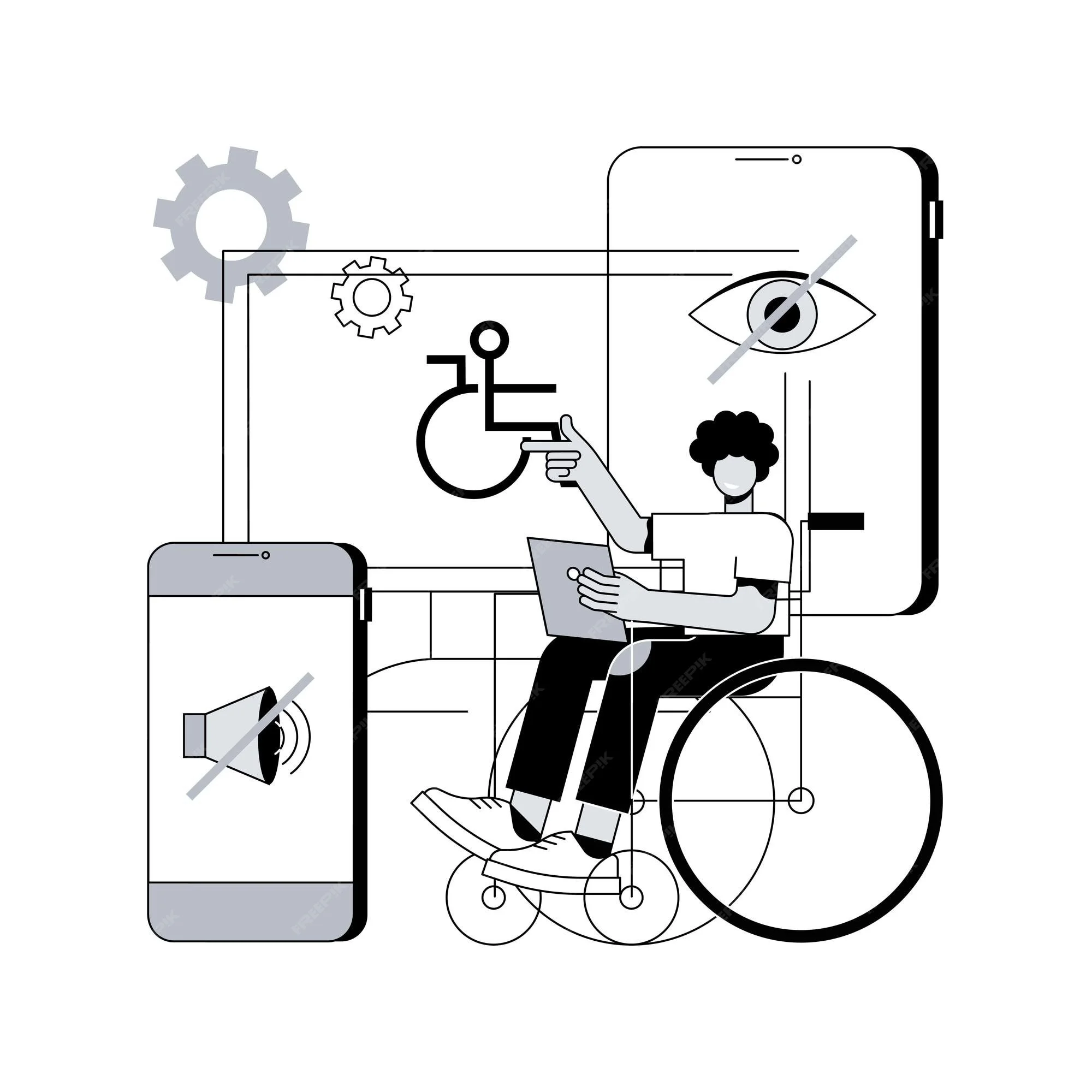The Future of Web Accessibility: Trends and Innovations
Stay ahead of web accessibility.
Web accessibility is constantly evolving as new technologies and innovations emerge. As more businesses recognize the importance of inclusivity, staying ahead of web accessibility trends is critical to improve compliance and deliver an enhanced user experience to all visitors. In this blog, we explore the future of web accessibility and the trends shaping its landscape, including AI-driven solutions, voice-enabled interfaces, and the increasing significance of mobile accessibility. By adopting these cutting-edge innovations, businesses can ensure they remain at the forefront of accessible web design.
1. AI-Driven Web Accessibility Solutions
Artificial intelligence (AI) is revolutionizing many industries, and web accessibility is no exception. AI-powered tools are helping businesses automate accessibility audits and implement real-time solutions to enhance website accessibility. One of the most prominent AI applications in this space is the use of machine learning algorithms to identify and fix accessibility issues, such as missing alt-text for images, improper heading structures, or insufficient color contrast.
These AI-driven tools can analyze websites at scale and in real time, providing instant feedback on compliance with Web Content Accessibility Guidelines (WCAG). This allows businesses to address accessibility issues proactively and continuously improve their sites. Some AI tools also offer auto-generated accessibility solutions, such as inserting alt-text or offering alternative content formats, which can greatly enhance the user experience for individuals with disabilities.
By integrating AI-powered solutions, businesses can streamline their web accessibility efforts and ensure that their websites remain compliant with accessibility standards. Interested in simplifying your web accessibility process? Learn how our Razor Accessibility Widget can help you enhance your website's accessibility with ease.
2. The Rise of Voice-Enabled Interfaces
Voice-enabled interfaces are transforming how users interact with websites. With the rise of virtual assistants like Siri, Alexa, and Google Assistant, voice search and navigation are becoming more popular, especially among users with disabilities. Voice-enabled interfaces provide an intuitive and hands-free way for individuals with motor impairments or vision impairments to access digital content and navigate websites.
In the future, we can expect voice-enabled features to become a key component of web accessibility. Websites that offer voice navigation options will empower users who may find traditional input methods like typing or clicking difficult. Additionally, integrating voice search functionality improves overall usability, helping all users—regardless of abilities—navigate websites more easily and efficiently.
To stay ahead, businesses should explore adding voice-enabled interfaces to their websites. Not only does this improve accessibility, but it also enhances user experience, offering a modern and convenient way to interact with your site. Learn more about the importance of creating accessible experiences for all users with our web accessibility features.
3. The Growing Importance of Mobile Accessibility
As mobile usage continues to rise, ensuring that websites are accessible on mobile devices is more critical than ever. Mobile accessibility is no longer an afterthought; it's a key component of an inclusive digital strategy. The World Health Organization estimates that over 1 billion people live with some form of disability, and many of these users rely on mobile devices to access the internet. For businesses, ensuring mobile-friendly accessibility is essential to reaching and engaging a wider audience.
Key mobile accessibility features include touch-target sizes, responsive layouts, and intuitive navigation. For users with motor disabilities, small touch areas can make it difficult to interact with mobile websites. Ensuring that buttons, links, and touchable elements are large enough to be tapped accurately is crucial for enhancing accessibility on mobile platforms.
Another growing trend in mobile accessibility is the use of responsive web design. A responsive website automatically adjusts to different screen sizes and orientations, ensuring that content remains accessible and readable on any device. Businesses must prioritize responsive design to ensure that users on mobile devices—especially those with disabilities—have the same level of access and usability as desktop users.
If you haven’t already, now is the time to optimize your website for mobile accessibility.
4. The Role of Accessibility in Future Tech Innovations
Looking ahead, web accessibility will continue to play a crucial role in the development of emerging technologies. From virtual reality (VR) to augmented reality (AR), making these new platforms accessible to all users is paramount. As these technologies become more mainstream, ensuring accessibility will be key to maintaining inclusivity in the digital space.
For example, AR can offer new ways for individuals with disabilities to engage with digital content in the real world. VR, on the other hand, presents opportunities for more immersive and inclusive experiences. However, without accessible design, these technologies risk excluding users with disabilities. As businesses begin exploring these new platforms, they must prioritize accessibility in their development to ensure they cater to all users.
Staying Ahead of Web Accessibility Innovations
The future of web accessibility lies in embracing these trends and innovations. AI-driven solutions, voice-enabled interfaces, and the growing importance of mobile accessibility are just a few of the exciting developments shaping the future of digital inclusivity. By staying ahead of these trends and integrating them into your website, you can enhance the experience for all users while ensuring compliance with accessibility standards.
Want to future-proof your website? Discover how our Razor Accessibility Widget can help you stay ahead of web accessibility trends while providing a seamless, inclusive experience for your visitors.

